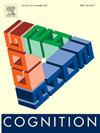心理意象塑造了人们在冒险决策中的情绪
IF 2.8
1区 心理学
Q1 PSYCHOLOGY, EXPERIMENTAL
引用次数: 0
摘要
本研究探讨了心理意象对人的情绪反应和冒险决策的具体影响。我们展示了四项研究的发现,包括三个实验,强调情绪是与风险相关的心理图像的效价和随后的冒险倾向之间的中介。我们的研究确定了调节这种关系的两个关键因素:认知过程的类别(分析思维vs.视觉心理意象)和心理意象的生动性。在研究1中,我们发现心理图像的效价对情绪反应的强度有影响,而情绪反应的强度又与冒险意愿有关。积极意象与更强烈的积极情绪和更大的风险承担相对应。实验研究2为这些关联提供了因果证据,表明积极想象风险相关行为的参与者比以消极方式想象风险的参与者报告了更强烈的积极感受和更大的冒险倾向。随后的预注册实验(研究3和4)证实了我们的中心假设,即心理意象是风险相关决策中情绪反应的独特驱动因素,并显示了这种影响的潜在边界条件。研究3强调,受心理意象影响的决策比基于分析推理的决策具有更大的情感力量。最后的研究4表明,生动的心理意象进一步缓和了这种影响:更生动的意象导致更强烈的情绪,从而影响冒险倾向。这些结果强调了情绪在决策中的重要性,特别是当决策是基于心理意象而不是分析时,并指出了形象生动对情绪和决策过程的放大效应。本文章由计算机程序翻译,如有差异,请以英文原文为准。
Mental imagery shapes emotions in people's decisions related to risk taking
This research investigates the specific effects of mental imagery on people's emotional responses and risk-taking decisions. We present findings across four studies, including three experiments, that highlight emotions as a mediator between the valence of mental images related to risk and subsequent risk-taking propensity. Our research identifies two key factors that moderate this relationship: the category of cognitive process (analytical thinking vs. visual mental imagery) and the vividness of mental imagery. In Study 1, we found an effect of the valence of mental images on the intensity of emotional reactions, which in turn were linked to risk-taking willingness. Positive imagery corresponded with stronger positive emotions and increased declared risk taking. The experimental Study 2 provided causal evidence for these associations, showing that participants positively imagining risk-related behaviors reported more intense positive feelings and a greater inclination to take risks than those imagining risk taking in a negative manner. Subsequent preregistered experiments (Studies 3 and 4) corroborated our central hypothesis that mental imagery is a distinct driver of emotional responses in risk-related decision making and showed potential boundary conditions for this effect. Study 3 emphasized that decisions influenced by mental imagery had greater emotional strength than those based on analytical reasoning. The final Study 4 demonstrated that vividness of mental imagery further moderates this effect: more vivid images led to stronger emotions, thus affecting risk-taking propensity. These results underscore the significance of emotions in decision making, particularly when decisions are based on mental imagery rather than analysis, and point to the amplifying effect of image vividness on emotional and decision-making processes.
求助全文
通过发布文献求助,成功后即可免费获取论文全文。
去求助
来源期刊

Cognition
PSYCHOLOGY, EXPERIMENTAL-
CiteScore
6.40
自引率
5.90%
发文量
283
期刊介绍:
Cognition is an international journal that publishes theoretical and experimental papers on the study of the mind. It covers a wide variety of subjects concerning all the different aspects of cognition, ranging from biological and experimental studies to formal analysis. Contributions from the fields of psychology, neuroscience, linguistics, computer science, mathematics, ethology and philosophy are welcome in this journal provided that they have some bearing on the functioning of the mind. In addition, the journal serves as a forum for discussion of social and political aspects of cognitive science.
 求助内容:
求助内容: 应助结果提醒方式:
应助结果提醒方式:


